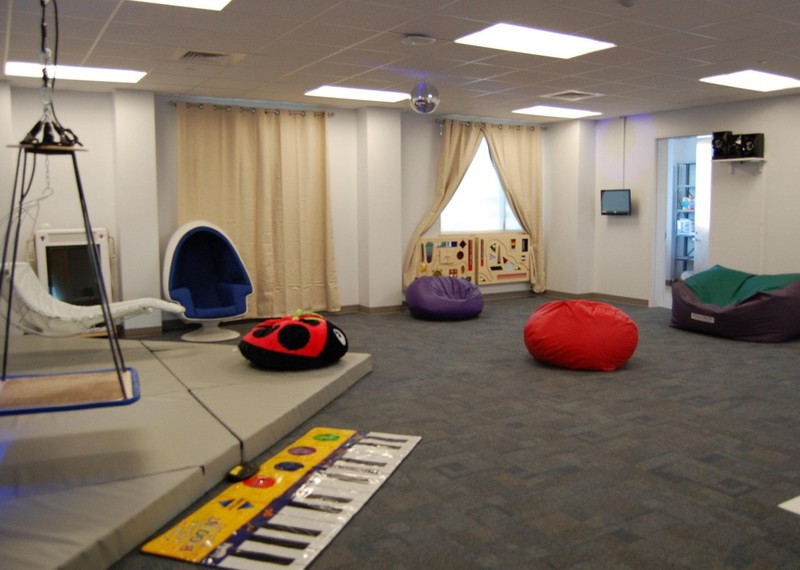Quiet Spaces
Quiet Spaces
Topic 3: Quiet Spaces
For those library users who require an escape from sensory overload, you could provide quiet places even without having an extra room or a large furniture budget devoted to this purpose. For example, for children, a pop-up tent could suffice, or a "reading cave" created out of cardboard boxes could provide just the quiet, dark, separate space that is needed to escape sensory stimuli and calm down. For adult patrons, a homemade or temporary wall (e.g., on wheels) can be used to create a separate space in an existing room that is already quiet. An image search of the Internet for "reading cave" will provide an abundance of creative DIY ideas for creating these types of spaces for people with autism who need a private space to calm down. These can be available at all times for use as needed, or librarians and staff can ask a patron if he or she would like to use it, depending on the relationship that has been established with the person with autism (and his or her caregivers if necessary). Additionally, the library can provide access to indoor sunglasses for overstimulating lights and ear protectors for hyper-stimulating sounds (available for checkout or in designated low-stim quiet rooms).

(Source: "Sensory Room" by Fairfax County, used under CC BY-NC-ND 2.0)
"Be sure to read this helpful article, Tips to Help Manage Noise Sensitivity in Autism."
